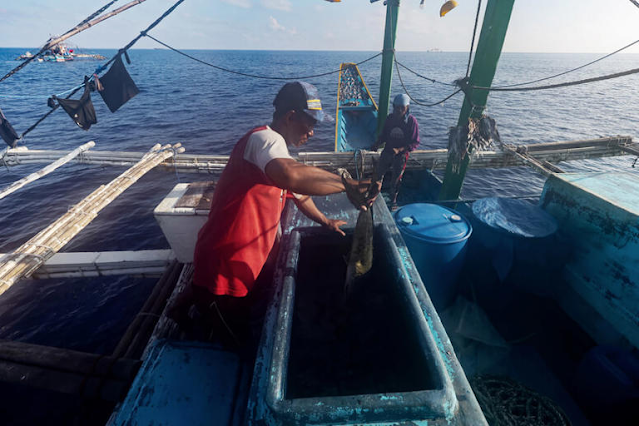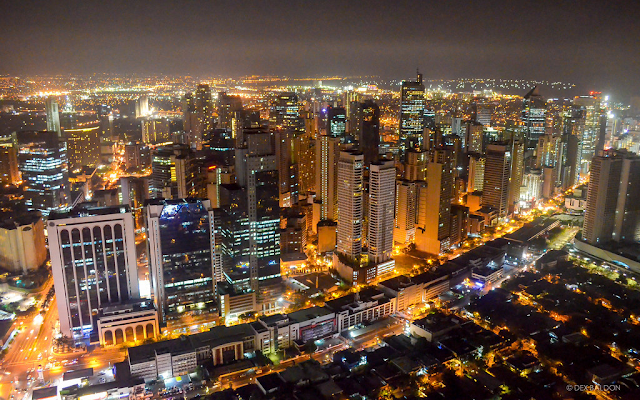Meet Michael Varcas, the Filipino photographer who won big at the 2024 World Press Photo Contest
Story by John Patrick Magno Ranara
PhilStar Life
11 April 2024
A Filipino photographer, whose picture depicts the struggles of local fishermen amid the rising tensions in the West Philippine Sea, was recently awarded at this year's World Press Photo Contest.
Michael Varcas, who serves as a photographer for the daily newspaper The Philippine STAR, made his country proud when he became one the regional winners at the competition organized by the World Press Photo Foundation, where the best of the best in photojournalism around the globe are recognized.
Varcas was chosen by an independent jury under the Southeast Asia and Oceania stories category for his entry dubbed "Battle for Sovereignty," which contains 10 single-frame photographs that he took back in September 2023.In them, the local lensman captured multiple scenes of conflict between Filipino fishermen and the Chinese Coast Guard in the middle of Panatag (Scarborough) Shoal, off Zambales, brought about by the territorial dispute between the two countries over the West Philippine Sea.
The jury highlighted how he was dedicated in telling this story and getting the images people need to see despite the challenges.
"The photographer's commitment to the story is evident in their ability to overcome the significant barriers faced by regional journalists to access these scenes from non-military vessels," the jury said.
Speaking to PhilSTAR L!fe about his win, Varcas said that it was a highlight of his 15-year career as a photographer who captures day-to-day news stories across the nation.
"I think it's the icing on my photojournalism career, it’s something that's nice to have at least before retiring," Varcas said.
At first, Varcas never considered submitting the photos at this year's World Press Photo Contest, but he changed his mind to shed some light on the hardships experienced by the fishermen when it comes to their livelihood.
I just thought that the news from television for the past months was pretty successive, so I thought that there should be images that will showcase the situation and struggles of our fellow Filipinos in the area," he explained.
"You can't just replay TV and radio reports every time as it requires much time as opposed to photos," he added.
Varcas sought the help of his colleagues in choosing the right photos that would do the Filipino fishermen justice in telling their stories and experiences.
Getting the big picture
With the Philippines taking a stronger stance against China over the West Philippine Sea, tensions rose. Varcas was then assigned to document the unfolding situation.
"During its successive news report on TV and radio, I really wanted to have a comprehensive representation through photos," the photojournalist said.
Recounting the challenges he encountered while taking the photos, Varcas shared, "During our arrival at the vicinity of Bajo De Masinloc in the early morning, we were radio challenged and we evaded dangerous maneuvers of the Chinese coast guards."
He continued, "Taking photos of the barriers up close was also a challenge for we had to disguise as fishermen onboard their tiny boats because anyone that comes near to the Scarborough shoal will have to risk getting chased by the Chinese coast guards."
The coverage made Varcas realize the importance of immersing one's self in subjects that matter."Doing it for our fellow countrymen, especially at the frontline of the dispute, you need to squeeze as much as you can for that very limited window. These are our evidence, we need allies, but also need hard evidence on the matter," Varcas underscored.
The man behind the lens
Varcas started his career as a news photographer back in 2009. His interest in the craft of immortalizing scenes through his camera started during his college days as a journalism student.
"I started as a college newspaper photographer and felt amused with the reactions of the viewers of my photos. There was no social media back then, so when I see reactions from schoolmates upon the release of new issues, I hear feedback from them that is mostly positive," he recalled.
Instead of being a traditional journalist who uses words and paper, he decided to pursue the camera as his means of telling a story as well as his livelihood.
"I love adventure, I can’t imagine working inside a room for a whole day," he said.
"I'm able to cover a variety of coverages. I'm shooting simple human interest photos today then the following morning, I’ll be up in the air on a chopper covering a disaster," he continued.
While some might think that photography is as quick to learn as a click of a camera, Varcas shared that it actually took him three years to gain the award-winning skills he has today, which he learned under the strict guidance of his former boss.
For his style, he noted that he tries his best to capture pictures that would be "understood easily no matter what the status of the viewer, [whether they're] rich or poor."
For the most part, the thing that inspires Varcas to take photos of the most are situations that need change for the better.
"May it be a calamity, the recent pandemic, or climate change. When something can be done with the help of photography," he said.
For those who want to follow in his footsteps and shine the spotlight on important issues in the world through pictures, Varcas has one simple advice that must be taken to heart: "Stay hungry."
Interview by Yoniel Acebuche


































